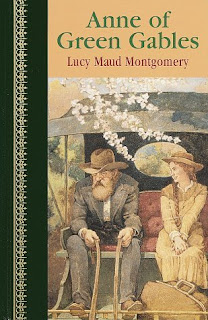
 Montgomery, L.M. 1908. Anne of Green Gables.
Montgomery, L.M. 1908. Anne of Green Gables.
I first 'discovered' Anne Shirley through watching the 1985 and 1987 films by Kevin Sullivan/Wonderworks when they aired on my local PBS station. As far as I'm concerned, these two are the ONLY films that are 'real.' Meaning that the monstrosity of a film released in 2000 doesn't exist at all. It's something that should be avoided at all costs. It is evil, evil, pure evil.
It would have been around sixth or seventh grade (1989-1990 or 1990-1991) that I 'discovered' the Anne of the books by L.M. Montgomery. It was love at first sight pure and simple. I loved Anne of Green Gables, yes, but I loved all of the Anne books. Then I moved from loving all the Anne books to loving all the Emily books. And then I started loving all the stand-alone novels too...like Tangled Web and Blue Castle. And then I discovered the short story collections. My sister started it, I suppose. She was the official owner of all the L.M. Montgomery books. And she never let me forget it either. I simply loved and adored L.M. Montgomery. She was the best of the best as far as I was concerned.
What is there to love about Anne Shirley? Everything! She's creative, imaginative, bright, vibrant, contagiously fun, good-spirited, and lovable. In a word she is charming. Oh to see the world through the eyes of Anne. There is something so wonderfully innocent and optimistic about Anne.
In Anne of Green Gables (1908), the reader is introduced to Avonlea. We meet Anne, Marilla, Matthew, Rachel, Diana, Gilbert, and those awful Pyes as well. The characters, the settings, the rich-and-detailed text...everything about this book is perfect.
Anne of Green Gables
Walk with her through Avonlea
Kindred spirit, yes?
© Becky Laney of Becky's Book Reviews
Viewing: Blog Posts Tagged with: China Mieville, Most Recent at Top [Help]
Results 1 - 13 of 13
Blog: Becky's Book Reviews (Login to Add to MyJacketFlap)
JacketFlap tags: "A" Titles, classic, YA Historical Fiction, J Historical Fiction, J Fiction, Heart of a Child Challenge, by the decades challenge, "M" Authors, Add a tag
Blog: Becky's Book Reviews (Login to Add to MyJacketFlap)
JacketFlap tags: J Fiction, "M" titles, "E" Authors, Heart of a Child Challenge, Orphans, Add a tag

 Edwards, Julie. 1971. Mandy.
Edwards, Julie. 1971. Mandy.Mandy, I admit, was a childhood favorite of mine. There was just something so heartfelt, so vital, about this young orphan girl who was searching for something to make her feel complete and found it in having her own little secret garden and cottage. Her dreams, her determination, her stubbornness made Mandy work for me. It's not that you can't find those characteristics in other orphans--I can think of plenty and I'm sure you can as well. But I think the fact is that I personally "met" Mandy first. (I read it before Anne of Green Gables or The Secret Garden.) Mandy is very simply the story of a young girl, Mandy, growing up in an orphanage. A girl who is as happy as she can be--most of the time at least--but not as happy as she wants to be, needs to be in order to feel truly, deeply loved. She's a girl that longs for more, wants more. She discovers in part what she's looking for when she ventures over the wall surrounding the orphanage. She finds a forgotten little place--perhaps this place represents herself in her mind, I haven't really thought of it like that--that is crying out for love and attention. It's in sad shape. But Mandy is determined to "play" house quite properly. She wants to fix up the garden, fix up the yard, and fix up the house. And she'll stop at NOTHING to do it.
Mandy, unlike Anne in many ways, is a sad and lonely little girl. It's not that she couldn't make friends her own age at the orphanage, that she couldn't connect with others, it's that she doesn't want to. She's introspective, I suppose. Would prefer to be my herself in some ways, yet feels a terrible loneliness. A garden--of flowers and such--isn't going to take the place of a family, a friend no matter how much Mandy wishes it to.
I loved Mandy then, and I love Mandy now.
For those that aren't aware, Julie Edwards = Julie Andrews.
© Becky Laney of Becky's Book Reviews
Blog: Becky's Book Reviews (Login to Add to MyJacketFlap)
JacketFlap tags: 888 Challenge, Heart of a Child Challenge, romance reading challenge, Chunkster Challenge, Book Awards Reading Challenge, Banned Books Challenge, adult fiction, Add a tag
 Mitchell, Margaret. 1936. Gone With The Wind.
Mitchell, Margaret. 1936. Gone With The Wind.But if you try sometimes you might find
You get what you need...
--The Rolling Stones
"We bow to the inevitable. We’re not wheat, we’re buckwheat! When a storm comes along it flattens ripe wheat because it’s dry and can’t bend with the wind. But ripe buckwheat’s got sap in it and it bends. And when the wind has passed, it springs up almost as straight and strong as before. We aren’t a stiff-necked tribe. We’re mighty limber when a hard wind’s blowing, because we know it pays to be limber. When trouble comes we bow to the inevitable without any mouthing, and we work and we smile and we bide our time. And we play along with lesser folks and we take what we can get from them. And when we’re strong enough, we kick the folks whose necks we’ve climbed over. That, my child, is the secret of the survival.” And after a pause, she added: “I pass it on to you.”
The old lady cackled, as if she were amused by her words, despite the venom in them. She looked as if she expected some comment from Scarlett but the words had made little sense to her and she could think of nothing to say. (709-710)
It's a novel that goes above and beyond the central character of Scarlett. Even if you hate Scarlett, I'd imagine you'd find some character to love. Be it Melanie. Rhett. Mammy. Uncle Peter. Grandma Fontaine. How could you not? There are so many characters, so many individual stories. Stories of triumph. Stories of loss. Stories of hope. Stories of disappointment. Stories of survival. Stories of failure. There is depth and meaning that the movie doesn't even try to accommodate. Depth and meaning that even diehard fans can't help but learn something new with each rereading.
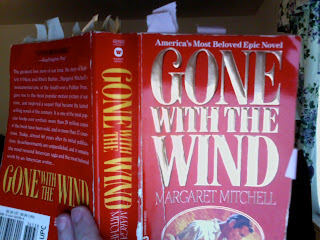 (The first few chapters were written last.) Margaret Mitchell had in her mind how the story would end. It was these characters in this last and final state--the frustrated and pleading Scarlett and the resolute and pitying Rhett--that were her characters. Her characters just as she wanted them; just as she first imagined them. Everything that comes before is leading up to this grand emotional finale. Every scene, every conversation. All the little plot twists. All were to lead up to this. It wasn't the other way around. The ending wasn't tacked on because Mitchell didn't know where to go next. This unhappy and emotionally draining scene was her perfect ending. Which is why I find the idea of sequels so laughable.
(The first few chapters were written last.) Margaret Mitchell had in her mind how the story would end. It was these characters in this last and final state--the frustrated and pleading Scarlett and the resolute and pitying Rhett--that were her characters. Her characters just as she wanted them; just as she first imagined them. Everything that comes before is leading up to this grand emotional finale. Every scene, every conversation. All the little plot twists. All were to lead up to this. It wasn't the other way around. The ending wasn't tacked on because Mitchell didn't know where to go next. This unhappy and emotionally draining scene was her perfect ending. Which is why I find the idea of sequels so laughable. Blog: Becky's Book Reviews (Login to Add to MyJacketFlap)
JacketFlap tags: J Fiction, 888 Challenge, series challenge, Heart of a Child Challenge, Eponymous Reading Challenge, Add a tag

 Cleary, Beverly. 1981. Ramona Quimby, Age 8.
Cleary, Beverly. 1981. Ramona Quimby, Age 8.
Ramona Quimby is eight years old and starting third grade. While in former years, Ramona was a pest--though she'd deny it to her dying day--she has in recent years began maturing, began becoming more thoughtful and responsible. That doesn't mean she doesn't slip up now and then, but it does mean she tries--really tries--to be a good girl. Ramona Quimby Age 8 is one of my favorites in the series. (Probably in the top three. Beezus and Ramona and Ramona the Pest being the top two though not necessarily in that order) Highlights in this one include Ramona taking a raw egg to school--thinking it's hard boiled of course--and throwing up her oatmeal in front of her entire class. It also includes the rather humorous adventures of Beezus and Ramona in the kitchen cooking dinner for their parents! The Quimbys are definitely quite good sports in eating "cornbread" made from cream of wheat and banana yogurt!
I love Ramona. And I love her family. The Quimbys are far from perfect, but they're so loving that you just gotta love them!
Blog: Becky's Book Reviews (Login to Add to MyJacketFlap)
JacketFlap tags: family, J Fiction, 888 Challenge, Heart of a Child Challenge, Eponymous Reading Challenge, Add a tag
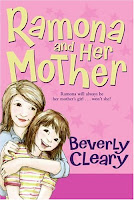
 Cleary, Beverly. 1979. Ramona and Her Mother.
Cleary, Beverly. 1979. Ramona and Her Mother.
Ramona and Her Mother follows Ramona and Her Father. The previous book closes with the Quimby family celebrating Christmas. Ramona and Her Mother opens shortly thereafter. Ramona is still in second grade. Beezus is still in seventh. Mr. Quimby, however, is newly employed. Not happily newly employed, but employed nevertheless. His job is at the super market. It's quite understandable how doing check out isn't the career-fulfilling job of his dreams.
Ramona has grown and matured since we first met her. But trouble does still have a way in finding her. Some of my favorite episodes in this book is Ramona giving Willa Jean a box of kleenex to occupy her while the grown-ups visit. She joyfully pulls out the whole box one by one and does a little dance. Another highlight is Ramona going to school in her pajamas with her regular clothes on the outside of course.
The Quimby family is great, and I really am enjoying getting reacquainted after all these years!
Blog: Becky's Book Reviews (Login to Add to MyJacketFlap)
JacketFlap tags: J Fiction, 888 Challenge, Heart of a Child Challenge, by the decades challenge, themed reading challenge 2008, Add a tag
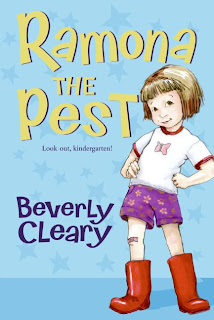
 Cleary, Beverly. 1968. Ramona the Pest.
Cleary, Beverly. 1968. Ramona the Pest.
"I am not a pest," Ramona Quimby told her big sister Beezus.
Ramona is back. Originally published in 1968, a full decade after Beezus and Ramona, Ramona the Pest follows Ramona as she enters a strange, new world: kindergarten. Now five years old, Ramona is ready--or so she thinks--to conquer this thing called school. Eager to learn to read and write so she can catch up with her older sister Beezus. But what Ramona doesn't expect to be quite so challenging is the ever-going struggle to be good, to stay good through the course of a school day. Staying in her seat. Being quiet. Following the rules. Playing nicely with others. Ramona hasn't encountered much resistance. This has been Ramona's philosophy, and up to a point, it has always worked for her: "If she had to, she would make a great big noisy fuss, and when Ramona made a great big noisy fuss, she usually got her own way. Great big noisy fusses were often necessary when a girl was the youngest member of the family and the youngest person on her block." (12) So you can only imagine what a rude awakening is in store for her as she enters Miss Binney's kindergarten class.
Ramona the Pest is completely delightful. The novel is from Ramona's perspective, and she captures kid-thinking, kid-acting so authentically. Ramona and her classmates. What can I say? There's the ever-so-cute, ever-so-kissable Davy, Susan with the boing-boing curls, and Howie who is Ramona's playmate not by choice but because their parents are good friends. What I didn't realize growing up was how authentically she captures the teacher, Miss Binney.
I have so many favorite scenes from Ramona the Pest. But my favorite favorite favorite scene comes from chapter five, "Ramona's Engagement Ring." Henry Huggins, boy hero, saves Ramona and earns her new-found love and attention.
One of the things that makes these novels so charming, so perfectly delightful (besides the brilliantly witty and authentic characters and dialogue) is the artwork by Louis Darling.
Blog: Becky's Book Reviews (Login to Add to MyJacketFlap)
JacketFlap tags: brothers and/or sisters, J Fiction, 888 Challenge, Heart of a Child Challenge, by the decades challenge, themed reading challenge 2008, Add a tag
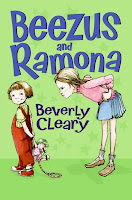
 Cleary, Beverly. 1955. Beezus and Ramona.
Cleary, Beverly. 1955. Beezus and Ramona.
Originally published in 1955, Beezus and Ramona is a true children's classic. Beezus, age 9, and Ramona, age 4, are the stars of Beezus and Ramona. This story is told from Beezus' perspective. (I believe the others in the series are told from Ramona's perspective.) This is how it opens: "Beatrice Quimby's biggest problem was her little sister Ramona. Beatrice, or Beezus (as everyone called her, because that was what Ramona had called her when she first learned to talk), knew other nine-year-old girls who had little sisters who went to nursery school, but she did not know anyone with a little sister like Ramona." If you've read any of the Ramona series, you know what she's talking about. Ramona. That love-to-hate, pesky little sister who is always into something. She has to be one of the best-loved, most-memorable characters ever created.
In Beezus and Ramona, we see the family dynamics of the Quimby household and the tension between two sisters. Beezus is almost perpetually frustrated with her younger sister. And Ramona is well, Ramona. Prone to wanting what she wants when she wants it.
I must have read this series dozens and dozens of times growing up. But I haven't read it recently. I probably last read it in 1999. Ramona is just as great as I remembered it. Each chapter has a scene that I almost know by heart. From the opening chapter, where Ramona's fascination with steam shovels lead her to destroy a library book, to the last chapter where Ramona's imaginative "acting-out" of Hansel and Gretel leads her to bake her doll, Bendix, in the oven and ruin her sister's birthday cake in the process.
I highly recommend this series to readers young and old. I think they make especially nice read-alouds! You can read the first chapter online here.
Blog: Becky's Book Reviews (Login to Add to MyJacketFlap)
JacketFlap tags: graphic novels, Heart of a Child Challenge, Young Adult Reading Challenge (Shady Glade), Add a tag
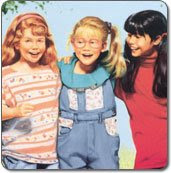
 Martin, Ann. 2006. The Babysitter's Club. Graphics by Raina Telgemeier.
Martin, Ann. 2006. The Babysitter's Club. Graphics by Raina Telgemeier.
The Babysitters Club. I admit it. I read them as a child. I can't say I read all 131 books and 12 Super Specials, but I read more than a few. I believe I grew out of them by the early to mid-thirties. (Not my age. The number in the series.) The first book in the series, Kristy's Great Idea, was published in August of 1986. When I discovered the series, the first three or four were already published. I believe I bought them all at the same time. (I think. It's been a while. But I do remember that I had to wait after that for each new release.) Why the emphasis on how old it is? Because it says something both about the book and about me.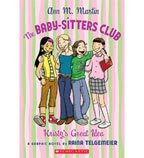 The graphic novel--for me--just didn't do this book justice. I'm biased. I'm not really "into" graphic novels. I'm not. I've read most of the Babymouse and I love them. I do. But that is really the exception. The others? I look at the covers. I might open one now and then. But overall, I'm just not that interested. Why did I pick this one up? The Young Adult Reading challenge (host Shady Glade) has a requirement of a graphic novel. And I wanted to reread Kristy's Great Idea for the Heart of A Child challenge. (And the actual novel-novel was checked out.)
The graphic novel--for me--just didn't do this book justice. I'm biased. I'm not really "into" graphic novels. I'm not. I've read most of the Babymouse and I love them. I do. But that is really the exception. The others? I look at the covers. I might open one now and then. But overall, I'm just not that interested. Why did I pick this one up? The Young Adult Reading challenge (host Shady Glade) has a requirement of a graphic novel. And I wanted to reread Kristy's Great Idea for the Heart of A Child challenge. (And the actual novel-novel was checked out.)
For those who haven't read any of the novels and have no idea what's going on (if you're patient enough to get this far), The Babysitters Club is started by Kristy. It is her "great idea." She teams up with some of her closest friends, Claudia and Mary Anne, and invites a new girl into the club as well, Stacey. The Club is to help parents find a babysitter in one quick and easy call. One call, 4 sitters at their disposal. The series alternates narrators between each member of the club. (And more than four do eventually join.)
I haven't read the book in at least fifteen years. But a lot has changed in fifteen years. The book has no computers, no internet, no email, no cell phones. And things like nail polish and make-up are "forbidden" to girls their age (seventh grade, I believe) and having a phone in one's bedroom (or one's own phone line in general) is a complete novelty. Claudia's extra-extra cool because she does. But the references to Rainbow Brite and G.I. Joe date the novel further. (While you could argue that G.I. Joe is relatively timeless, they're certainly not the HUGE thing they were in 1986. I remember watching the end credits to the cartoon show every week day. I was always early for the next show. Now I can't quite remember what that show was.)
I don't know if the lack of technology would bother modern readers or not. But not having it certainly makes starting the club more work for the kids. And that's not necessarily a bad thing. It gets them thinking; it gets them into being creative.
There is more than just babysitting involved as well. The big "issues" of the book being Kristy dealing with her parent's divorce and her mother's dating again and Stacey's issues with coming clean about her diabetes to her friends. (Claudia's issues are with her parents not wanting her to wear make-up. Mary Anne's issues are with her father's strictness in general.)
I was surprised by how much I remembered. The small things. The little details. The snippets of dialogue. Each character's pet peeves. The mundaneness of siblings' names even. This is neither a good or bad thing. Just something to think about. I wonder how much essentially useless knowledge is stored in my brain???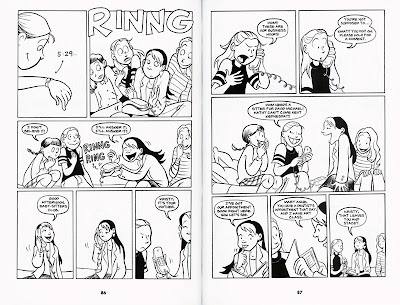
Blog: Eric Orchard (Login to Add to MyJacketFlap)
JacketFlap tags: gouache, tim powers, china mieville, neil gaiman, pen and ink, watercolour, china mieville, gouache, tim powers, Add a tag
Blog: A Patchwork of Books (Login to Add to MyJacketFlap)
JacketFlap tags: Heart of a Child Challenge, Heart of a Child Challenge, Add a tag
 I knew when I signed up for Becky's Heart of a Child challenge, this book had to be on my list. I read 10 Kids, No Pets and it's sequel 11 Kids, One Summer, probably about 100 times over the course of my childhood and I was all too happy to have a reason to pick the book up again. It's a very simply story, but one that has always held my attention, not to mention made me wish I had a lot more siblings!
I knew when I signed up for Becky's Heart of a Child challenge, this book had to be on my list. I read 10 Kids, No Pets and it's sequel 11 Kids, One Summer, probably about 100 times over the course of my childhood and I was all too happy to have a reason to pick the book up again. It's a very simply story, but one that has always held my attention, not to mention made me wish I had a lot more siblings!
Blog: The Mumpsimus (Login to Add to MyJacketFlap)
JacketFlap tags: Nicaragua, Scott William Carter, Cormac McCarthy, China Mieville, film, Linkdump, China Mieville, Cormac McCarthy, Nicaragua, Scott William Carter, Add a tag
I have finally made my way through the 3,000 emails that had accumulated in the mumpsimus at gmail account during my absence from checking it. Thank you to everyone for bearing with me on that. If you need a response of some sort to something, and I haven't yet replied, please send me another note, because I think I have responded to everything that seemed to need a response.
There are some sites and items I discovered from the mail, including:
- The First Book, a site created by Scott William Carter to provide interviews with and information about authors of first novels. Scott was my roommate at the very first science fiction convention I went to, and he's not only a tremendous nice guy, but has developed a great career with lots of short stories published in a wide variety of markets and now a novel that is forthcoming from Simon & Schuster in 2010.
- Noticing my comments on Cormac McCarthy's The Road, Henry Farrell let me know about a conversation with China Miéville about The Road that he had a year ago. I completely missed this when it was first posted (probably because I'd just gotten back from Kenya), and regret that, because it's very much worth reading.
- Starship Sofa is a science fiction podcast with a great selection of material -- right now there's a podcast (mp3) about the life and career of the much-too-neglected John Sladek, and past shows have included readings of stories by Pat Murphy, Bruce Sterling, David Brin, and others.
- This isn't from the mail, but I'll add it here anyway: A thoughtful review of the soon-to-be-released Criterion Collection DVD of Alex Cox's Walker
. This is an extraordinary movie, and I'm looking forward to seeing the DVD very much, because I've only ever watched it on an old videotape I got a few years ago, and the image quality on the tape is awful. I first got interested in Walker after I returned from a trip to Nicaragua and started reading up on Central American history -- and one of the stories that most captured my attention was that of William Walker, who took a ragged band of ruffians down to Nicaragua and declared himself president. Cox turned the story into a bizarre movie, and when I first watched it my reaction was basically, "Huh?" But a second viewing endeared the movie to me, and Ed Harris's performance as Walker is extraordinary -- he's one of the best actors out there, but seldom gets a chance to really show what he can do to the extent he got with Walker. The film is a political satire, an over-the-top historical epic, a chaotic mix of anomalies and goofiness, a sad and affecting tale of American capitalism and imperialism. Other films were made in '80s about Nicaragua -- Under Fire and Latino come to mind -- but Walker has more depth and nuance (even amidst its blustery weirdness) than its more straightforward and painfully earnest cousins, and it has withstood the passing of time all the better for it.
Blog: Biblio File (Login to Add to MyJacketFlap)
JacketFlap tags: YA, music, fantasy, China Mieville, Brandon Mull, Add a tag
Well, the song of the day is...Cibelle's  London, London. I find it fitting... also, is anyone listening to the music I post? I'd love some feedback on the new feature!
London, London. I find it fitting... also, is anyone listening to the music I post? I'd love some feedback on the new feature!
As Mieville primarily writes for adults, this book got a lot of buzz from places that normally wouldn't look twice at a children's book.
Sadly, as most of these reviewers haven't picked up a children's book since they were children, they might have over-hyped it a bit as best thing written for children EVER.
Now, it is really good. Really, really good and I was going to nominate for a Cybil, but someone beat me to the punch.
Zanna and Deeba are two council estate girls in London. Weird things have been happening-- graffiti praising Zanna's name and animals paying attention to her. During a sleepover, the girls see a broken umbrella hovering under the window, they follow it. There they discover UnLondon, an abcity, an underground world built out of London's junk and cast offs.
Included in the junk and cast offs is the smog-- London's pollution is not only malevolent, but it has a mind of its own. UnLondon needs the Shwazzy, the chosen one who will lead them through the tough times again. Zanna is that Shwazzy.
Except, when they come back to London, Zanna doesn't remember anything, so it's up to Deena to save the city, no matter what the prophesy says.
Mieville's world is intricate and well thought out. Deeba's accent, however, is uneven. Being an estate kid, she will often use double negatives and will say "fink" instead of "think" but, amazingly enough, she never drops her final "g"s. A reader will go for pages listening to Deeba speak in standard English, and then one word will slip in-- it jars the reader and pulls them out of the story a bit.
However, and I think this is one of the only books I will ever say this for, if you like Harry Potter, especially later, darker Potter, I would recommend this book. (Especially if you're still pondering Dumbledore's feelings on prophesy.)
I'm still having nightmares about giraffes. I promise, you'll never look at them the same way again...
Fablehaven Brandon Mull
So, I really enjoyed Miss Erin's review of Fablehaven: Rise of the Evening Star, but thought maybe I should start with the first book in the series. So I did.
Kendra and Seth aren't all that excited to spend the month with their Grandpa and Grandma Sorensen. They don't visit that often, Kendra and Seth have never been to their house, and, well, come to think of it, no one's seen Grandma in awhile at all.
When they get there, Grandpa has all of these weird rules that really put a dent in their fun. It doesn't take the kids long to figure out something very, very strange is going on at Grandma and Grandpa's...
What's strange is that Grandma and Grandpa are caretakers of Fablehaven-- a refugee for mythical creatures. Now that their eyes are open, Kendra and Seth can see fairies and satyr's and naiads... But even now that the rules make sense, Seth still can't follow them and the consequences are disastrous.
Overall, Fablehaven is fun adventure, but Mull has obviously spent time poring over folklore and fairytales to weave into his well thought-out world and plot.
I'm very much looking forward to getting my hands on a copy of the next one!
Blog: Crossover (Login to Add to MyJacketFlap)
JacketFlap tags: Michelle Pauli, Un Lun Don, China Mieville, Add a tag
Have any of you read Un Lun Don yet? It's received some excellent reviews. I'm so swamped, though, I haven't yet sought it out. Let me know what you think!
In any case, Michelle Pauli talks to China Mieville today for the Guardian. Why the switch to children's lit? Well for the usual reasons, but also because giraffes come into play in the novel. Here's what Mieville has to say on that subject:
- "I wanted to think of an animal almost universally considered adorable and make them a really scary baddie. So it had to be either giraffes or pandas ... You couldn't do that in an adult book.""



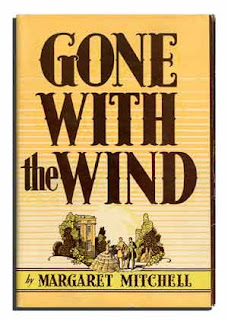



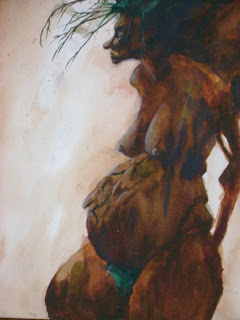
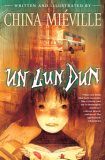
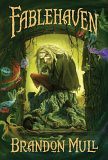
Yes, yes, yes!! I agree with you about the fab Megan Follows/Colleen Dewhurst version, but I was originally introduced to Anne by a fine BBC production in the 1970s. Sadly, it's not available anymore, and it's not as good as the PBS one.
I love that Anne is so wonderfully spacy and imperfect, and has such a nose for mischief and trouble. And, of course, her imagination is just lovely. She was definitely my role model and, yes, I did feel like a kindred spirit. For one thing, I drove the Marillas in my life nuts (Mrs. D. in my book was definitely inspired by one of them, an old teacher of mine...)
I loved the movies! I can't remember if I read the books first or saw the movies first, but I loved them both. I don't know if I've read everything by L.M. Montgomery, but I must have read everything in my city library when I was younger. I can't recall it all now, but I remember being very fond of her writing.
I totally agree. I love everything I've read by Montgomery. There are still some out there I haven't read yet (a few Emilys and Janes and The Blue Castle, Among the Shadows,another Story Girl book etc.) It's wonderful that she not only wrote beautifully but was so productive.
I don't remember the movies - I saw a televised series - the one from the cover of one of the book editions - that I loved almost as much as the books!
If you haven't read Before Green Gables yet you should get hold of a copy - it's a very well written book and I'm enjoying finding out more about the young Anne
I read the Emily books first. Then all the Anne books. I didn't see the movies until I was an adult but thought Megan Follows and Emily Dewhurst were perfect. Oh, and Matthew--I loved Matthew in the movies.
Anne girl may be my all time favorite character.